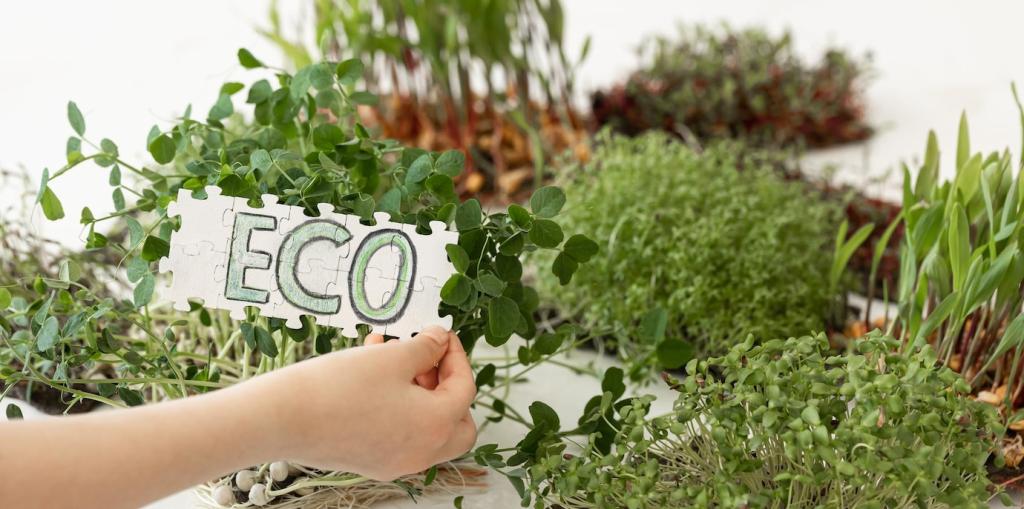Recycled Glass Countertops: Today’s Chosen Theme for a Brighter, Greener Home
What Are Recycled Glass Countertops?

Recycled glass countertops combine glass chips—often post-consumer bottles and jars—with a binder such as resin or cement. The results feel like modern terrazzo: sturdy, polished, and full of life. Many brands use high recycled content, turning waste into something purposeful and long-lasting.
Sustainability, Footprint, and Honest Trade-offs
Waste Diverted, Impact Reduced
Recycled glass countertops help divert glass from landfills and reduce pressure on quarries. By reusing existing materials, they often lower certain embodied impacts. Still, sustainability improves further when you source locally, minimize offcuts, and choose a fabricator who optimizes slab usage.
Binders, VOCs, and Certifications
Resin-based options can be low-VOC and Greenguard-type certified, while cement-based tops avoid petrochemicals but need sealing and weigh more. Ask for environmental product declarations and recycled content documentation. Balance performance with health considerations to match your household’s priorities.
End-of-Life and Circular Thinking
Plan durability and repairability from day one so your countertop serves for decades. If a remodel eventually comes, slabs can be repurposed as worktops, tabletops, or milled into aggregate again. Thoughtful adhesives and mechanical fasteners can make salvage more realistic.
Durability, Maintenance, and Real-Life Use
Heat, Scratches, and Everyday Wear
Glass chips are hard, but binders vary. Use trivets to avoid thermal shock from hot pots, and cutting boards to prevent micro-scratches. With mindful habits, surfaces stay glossy and resilient, even in homes where cooking, crafting, and homework share the same island.
Sealing, Etching, and Stain Prevention
Resin-based tops are typically non-porous; cement-based tops often require periodic sealing. Wipe spills promptly, especially acidic splashes like lemon or vinegar, which can etch cement matrices. Follow the manufacturer’s schedule to keep sheen consistent and colors vibrant over time.
A Simple Cleaning Routine That Works
Use a soft cloth and a pH-neutral cleaner for daily wipe-downs. Avoid abrasive pads and harsh chemicals that can dull the finish. Weekly attention to seams and caulk lines prevents moisture intrusion, preserving that luminous, polished look you fell in love with.

Light Play and Terrazzo Vibes
Recycled glass shimmers under daylight and glows under LEDs, creating a playful depth reminiscent of terrazzo. Strategic lighting—like dimmable strips or pendants—brings out facets at night, while matte finishes offer a softer, contemporary feel for minimal interiors.

Edge Profiles, Thickness, and Overhangs
Common thicknesses include 2 cm and 3 cm, with eased or pencil-round edges reducing chipping risk. For longer overhangs, discreet brackets add support and safety. A waterfall end panel can highlight the aggregate, guiding eyes from countertop to floor with sculptural continuity.
Templates, Cutouts, and Seams
Installers create precise templates around walls and appliances, then fabricate sink cutouts and edge details. Seams are positioned where stress is lowest and patterns align. Clear communication about faucet holes, fixture spacing, and reveal preferences ensures a polished, custom fit.
Logistics, Handling, and Protection
Slabs are heavy and must be carried safely, with corners protected and pathways cleared. After installation, cover surfaces if other trades continue work. A quick walk-through—checking level, seams, and caulk—prevents issues, saving headaches during the final punch list.
Comparing Recycled Glass to Quartz, Granite, and Concrete
Recycled glass reduces quarrying and can support local recycling ecosystems. Quartz and granite offer strong durability but rely on mining and resins. Concrete is versatile yet porous and heavy. Your best choice balances impact, sourcing, and long-term care priorities.
Comparing Recycled Glass to Quartz, Granite, and Concrete
Recycled glass competes well for stain resistance in resin-bound versions and offers vivid aesthetics. Cement-bound tops require sealing vigilance, similar to concrete. For bathrooms, consider moisture exposure around sinks and select finishes that align with your cleaning habits.


